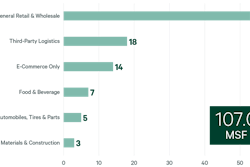
Inflation challenges and supply chain impacts from factors like war, disease outbreaks, trade disputes and more are continuing to plague the food and beverage industry in 2023. As margins tighten, consumers are continuing to be subjected to steep price increases for staple items and necessities. For example, according to the U.S. Bureau of Labor Statistics in January, the index for cereals and bakery products rose 16.1% over the year with a 7.7% increase reported for meats, poultry, fish and eggs and a 15.3% increase for dairy and related products.
However, food manufacturers must be mindful of price gauging their customers, many of which have already tightened their budgets due to the worsening economy. If customers begin to feel like they are footing too much of the bill, manufacturers run the risk of losing customer loyalty and negatively shifting consumer habits. Should loyal consumers turn to off-brand or more affordable private label products, companies will face an even greater challenge to maintain their profitability.
So, how can food manufacturers offset the impacts of the economy in a way that does not negatively impact their consumer experience? To start, management should begin to analyze data, assess systems and processes, re-examine the effectiveness of business relationships, re-evaluate and refine budgets, and identify opportunities to improve and manage cash flow.
There are several factors that may be considered this year to cut costs, outlined below.
Secure alternative suppliers
Have you adequately diversified your supplier portfolio? Alternative suppliers should be considered if your current supply chain is being impacted by unpredictable factors like disease outbreaks or international trade disputes. If you are having consistent issues with a supplier based on factors impacting their ability to produce and deliver, it may be time to seek partners in new geographical areas or in locations with healthier and more predictable economies. Doing so may prevent continued price increases for necessary ingredients and stabilize the cost of your production and freeze price increases that are typically passed along to the consumer.
Substitute ingredients
If product shortages are significantly affecting the cost to manufacture certain products, seek ways to rework recipes temporarily or permanently to avoid major impacts. Due to the avian flu outbreak impacting the population of chickens, the price of eggs has skyrocketed year over year with many seeing prices quadruple. With eggs being a main ingredient in a number of manufactured food products, it may be time for companies to consider pivoting to substitutes like yogurt or buttermilk or even plant-based options to offset the cost of eggs until the industry rebounds from the flu pandemic.
Reconsider packaging
If you are going to ask your consumers to pay a premium for your products, it may be time to explore new package size options as a way to provide more value. This offers more cost-effective options for customers as well as for manufacturers, who can use less packaging material than they would for packaging their products a la carte. This may include introducing bulk packaging or multi-packs where less boxes are required to package more product. Making this change may make a significant difference in margins while ensuring the customer feels like they are getting a better “deal” for more product.
Reassess logistics
If you feel as though the cost of your logistic function is becoming a strain on business, it may be time to reassess your relationships and contracts with your current providers. Depending on the strength of your existing partnership there may be opportunities to work efficiently and effectively to stabilize inflationary prices together. If they are not open to collaborating on a solution where you can reduce your overheads, it may be time to explore new partners. Manufacturers may want to assess whether more automation or bringing certain logistics function in-house could improve their future cash flow.
At the end of the day, people have to eat, but their loyalty to brands may not be as strong as their need to seek the most economical options when it comes to food and beverage products especially during times of inflation. While manufacturers have a business to mind and maintaining margins is a top priority, it is also necessary for companies to be thoughtful of how much of their overhead they are shifting to the consumer and their decreasing tolerance for spending.
While it’s not an easy situation to navigate, manufacturers must start seeking effective changes, whether temporary or permanent, to retain customers while managing their inventory and staffing levels, availability of supplies, consumer expectations and continuously changing costs of inputs. This mindset should not be short-term, either. Management should use this difficult moment in time to create detailed plans for beyond 2023 to ensure that changes implemented now are sensible investments that align with industry regulations. If navigated successfully, manufacturers can drive future, long-term growth in the business, consumer loyalty and operational efficiencies.




















